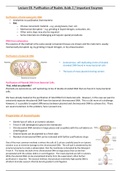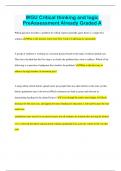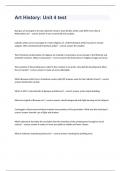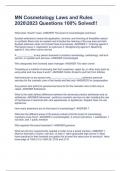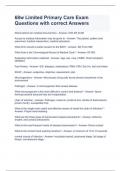Purification of total eukaryotic DNA
• Similarities to purification from bacteria
• But:
– Choose convenient material – e.g. young leaves, liver, etc.
– Mechanical disruption – e.g. grinding in liquid nitrogen, sonication, etc.
– Other extra steps may also be required
– Some materials are challenging and require special procedures
DNA from eukaryotes:
The essence of the method is the same except convenient tissues are chosen and the material is usually
mechanically disrupted: eg. by grinding in liquid nitrogen, or by ultrasonication.
Purification of plasmid DNA
• Autonomous, self-replicating circles of double
stranded DNA found in many bacterial cells
• The basis of many plasmid cloning vectors
Purification of Plasmid DNA from Bacterial Cells:
First, what are plasmids?
Plasmids are autonomous, self replicating circles of double stranded DNA that are found in many bacterial
cells.
We have already looked at the purification of total DNA from bacterial cells. However, in this case we want to
selectively separate the plasmid DNA from the bacterial chromosomal DNA. This is a bit more of a challenge.
However, it is possible to exploit differences between plasmid and chromosomal DNA to achieve this. There
are several solutions to this problem, here I present one.
Preparation of cleared lysate
• Gentle lysis of cells in an isotonic solution
• Triton X-100 (detergent) ruptures the membrane
• Chromosomal DNA remains in large pieces and co-pellets with the cell debris on
centrifugation
• Cleared lysate can be pipetted to a fresh tube
• Residual chromosomal DNA can be removed with further purifications steps
One of the most common methods is where the cells of E.coli are carefully lysed in an isotonic
solution so as to minimise damage to the chromosomal DNA. The cell wall is weakened by the
enzyme lysozyme to create a sphaeroplast, that the membrane is disrupted by the detergent
Triton-X. This leaves the bulk of the chromosomal DNA as large pieces that can be then
precipitated with the cellular debris on centrifugation. The intact plasmids are left in solution.
While the plasmid DNA can be precipitated directly from the supernatant, often further
purification is required. The classical method, that produces extremely high quality DNA is
ethidium bromide-caesium chloride density gradient centrifugation.
,Ethidium bromide
• Intercalates between the strands of the double helix
• “Stretches” helix structure
• Decreases buoyant density
– More for linear & open-circular DNA
– Less for supercoiled DNA
• Therefore, can separate linear & supercoiled DNA on
caesium chloride gradient
• EtBr-stained DNA fluoresces under UV light
• EtBr is a powerful mutagen – so take care!
Ethidium bromide intercalates between the strands of the double helix,
thereby reducing its buoyant density. The buoyant density of linear DNA is
reduced more than that of supercoiled DNA, such as undamaged plasmids.
This is the basis of their separation on a caesium bromide gradient. In addition
ethidium bromide also has the property of making stained nucleic acids
fluoresce when exposed to UV light. EtBr is a powerful mutagen for obvious
reasons.
Ethidium bromide-caesium chloride centrifugation of DNA
- Extended centrifugation at high rpm creates a density gradient
in the tube
- Molecules, including DNA band according to their buoyant
density
The DNA extract is mixed with a solution of caesium chloride and
ethidium bromide and centrifuged at very high speed for over 24
hours. During this time a density gradient becomes established
in the tube and molecules become positioned according to their
buoyant density.
EtBr-CsCl centrifugation
• Buoyant densities of linear & supercoiled DNA causes
them to band separately
• Plasmid DNA is removed with a hypodermic syringe
• EtBr is removed with butanol
• CsCl is removed by dialysis
It is then a simple matter to remove the plasmid band from the tube using a hypodermic, remove the EtBr by
mixing with butanol, and the CsCl by dialysis to get pure plasmid DNA. This can then be concentrated by
ethanol precipitation.
, Purification of other nucleic acids
Purification of other DNAs:
The purification of other DNAs such as, for example bacteriophage lambda, eukaryotic DNA, mitochondrial or
chloroplast DNA, involve variations on these methods. The nature of the tissue, the cellular sub-fraction in
which the DNA is found, and the biology of the organism concerned determine the precise details about how
one goes about the process.
Purification of RNA:
There are a variety of methods used for this depending on the source of the RNA. The methods used are
broadly similar to those used for purifying DNA. However buffers and techniques are used which favour the
conservation of RNA and the elimination of DNA.
• DNAs • RNAs
– E.g. bacteriophage, – Many similarities to DNA
mitochondrial, chloroplast, purification
etc. – However, use methods,
– Variations on the theme reagents & buffers that
depending on nature of the favour the conservation of
tissue or the sub-cellular RNA & the elimination of
fraction in which the DNA is DNA
found – Start with a tissue in which
– E.g. bacteriophage particles your RNA of interest is
are found in the medium abundantly expressed
rather than the E. coli cells
Purification of messenger RNA
Messenger RNA is polyadenylated poly(A)+ RNA
• RNA:
– Ribosomal RNA – rRNA
– Transfer RNA – tRNA
– Messenger RNA – mRNA ≈ poly(A)+ RNA – about 1% of
total RNA
• mRNA is polyadenylated at its 3’ end
5’--------------------------------------AAAAAAAAAAA3’
• Provides a handle to selectively purify mRNA from total
RNA
mRNA only makes up about 1% of total RNA, most is rRNA and tRNA. Therefore, while a total RNA prep is the
starting point for cDNA cloning, for the process to be efficient we need to selectively purify mRNA from total
RNA. After transcription most mRNA is enzymatically polyadenlyated at its 3’ end; in other works it has a
string of As added to it. Hence one speaks of poly(A)+ RNA. This polyadenylated 3’ end provides a useful tag
or handle by with to select mRNA from total RNA.
, Oligo(dT) chromatography
1. Prepare a small column containing oligo-dT bound to a cellulose matrix. That is cellulose with
oligomers of thymidine attached to it.
2. Apply total RNA in a high salt buffer. Poly(A)+ RNA hydrogen-bonds to oligo(dT)
3. A medium salt buffer is added which washes off the RNA which has not bound, in other words
the rRNA and the tRNA are washed off and the mRNA (poly(A)+ RNA) is retained by the oligo-
dT cellulose.
4. Add water – breaks H-bonds & washes off poly(A)+ RNA. A buffer without salt is then poured
through the column which washes off the poly-A+ RNA which had been stuck to the oligo-dT.
5. The RNA can then be concentrated by ethanol precipitation.
Magnetic kits - Can use oligo (dT) attached to magnetic beads
What to do with your DNAs
• Know how to purify nucleic acids from a variety of sources
• Exists a wide range of specialist enzymes with which to manipulate and modify nucleic
acids (NAs)
• These are essential tools for cloning and for the subsequent manipulation of cloned NAs


